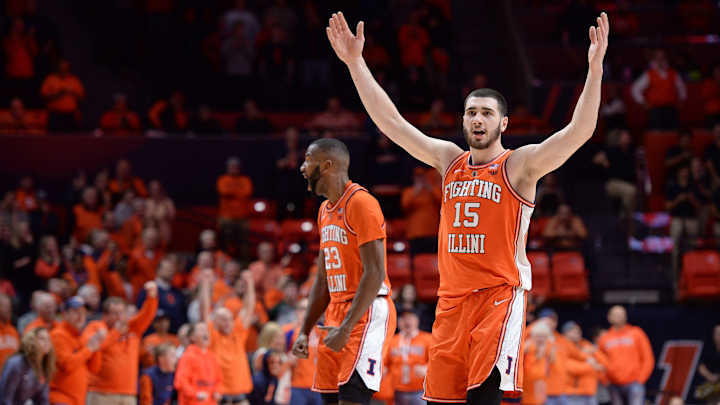The Big Ten's Unpredictability Is a Testament to Its Strength

Less than a month ago, Illinois was 4–12 and 0–5 in the Big Ten, its season having recently reached rock bottom with a Dec. 29 home loss to Florida Atlantic.
It wasn’t out of place to wonder whether the Illini would win a Big Ten game all season, and they certainly weren’t expected to grab one over anyone who wasn’t Rutgers, Northwestern or Penn State. So forgive us if we didn’t see what was coming next: After a stunning 79–74 home victory over No. 9 Michigan State on Tuesday—the program’s first over an AP top-10 team in six years—Illinois has already matched its conference win total from last season, with four. Three of those wins have come in its last four games, with the Illini also having recently beaten a ranked Maryland team in New York City and Nebraska (after the Cornhuskers lost Isaac Copeland).
The Spartans certainly aren’t going to feel good about losing their third straight game (and especially not about committing an astounding 24 turnovers), even if it was on the road. But perhaps they can take the slightest solace in the fact that they’re not the first victim of an Illini team that is quickly growing and adapting to the system of second-year coach Brad Underwood.
It’s the latest testament to the strength of the Big Ten, which has a legitimate claim to being the best conference in the country in 2018–19. Not only does expected bottom-dweller Illinois have four conference wins with eight games still remaining, but so does Rutgers, which had been a perennial doormat since joining in 2014. With an emphasis on defense under Steve Pikiell, the Scarlet Knights have wins over Ohio State, Nebraska, Penn State and Indiana, and have turned the RAC into a tough road trip, nothing like what league teams had probably been accustomed to over the last few years.
Whether you’re using the eye test or advanced analytics, the case for the Big Ten as the nation’s best conference is easy to make. Its best teams may not be quite as good as the best of the ACC (i.e. Duke and Virginia), but its strength and depth from top to bottom are what make the league so dangerous.
The Big Ten is ranked as the No. 1 conference on kenpom.com, a far cry from the fifth-place finish it had after a down 2017–18. All 14 teams in the league are within the kenpom top 100, with Rutgers being the only one outside the top 70, and everyone but the Scarlet Knights entered Tuesday in the top 100 of the NET rankings. Even Penn State, which only got its first conference win of the season on Monday night, is a respectable 64th on kenpom, ranked right among the likes of Arizona and Seton Hall.
Having 13 teams within the top 70 on kenpom at any point in the season is an unusual feat. For comparison, the two power conferences of similar size—the ACC and SEC—currently have nine apiece, with both leagues having multiple sub-100 teams. There are no “gimmes” in the Big Ten this year, which may mean more upsets, but also means tons of opportunities for résumé building and all-important Quadrant 1 and Quadrant 2 wins. For example, after the Nittany Lions beat Northwestern on Monday, they moved up to No. 74 in the NET rankings. Why is that significant? It means any Big Ten team with a road win over Penn State—remember, a team that’s 1–10 in league play—has (at least for now) added a crucial Quadrant 1 victory to its résumé.
It’s not all sunshine and roses, though: with both Michigan schools sustaining upsets of late (the Wolverines lost at Iowa last week) and Purdue only now breaking through after a more shaky non-conference showing, the Big Ten could be playing itself off the top line in the NCAA tournament. Gonzaga already replaced the Spartans as a No. 1 seed in SI.com’s most recent Bracket Watch after MSU lost to Indiana on Saturday, and may be tough to knock off that perch.
One-seeds aren’t the be-all, end-all, obviously, and the conference should do just fine in March seeding in general, with three or four schools likely to enter the Big Dance harboring not-so-crazy Final Four hopes. At this point, though, it’s clear no one in the Big Ten is perfect. Michigan has questions about its offense, Purdue has questions about its defense, Michigan State’s nagging turnover woes and backcourt depth are prone to strike and the next tier of teams (Wisconsin, Maryland, Iowa) all have at least one area of glaring concern. But another thing that’s clear about the Big Ten? However many teams it sends dancing, they’ll all be battle tested, having gone through the league’s strongest overall gauntlet in over half a decade.

Molly Geary is an associate editor for SI.com. A graduate of the University of Maryland, Geary has worked for the company since 2014.